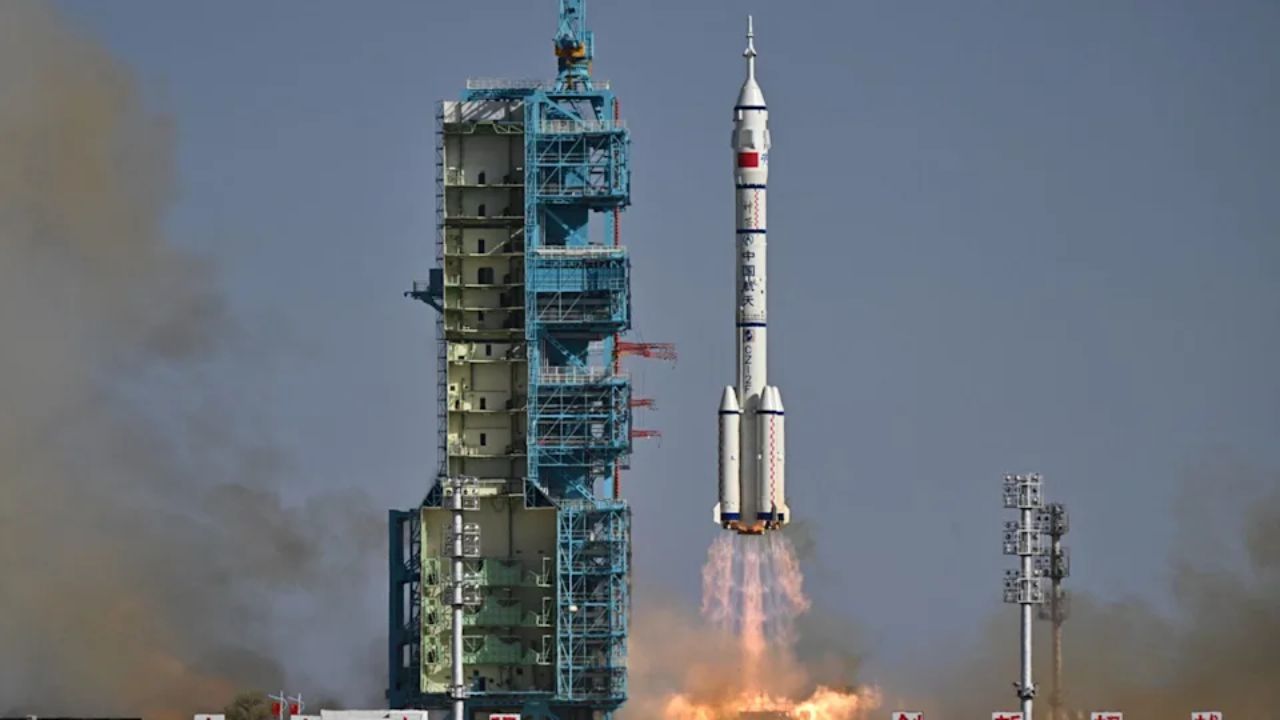 English
English

Officials described this as China’s first emergency launch of this kind, completed in 16 days because the rocket and spacecraft were already standing by at the launch centre, part of China’s rule requiring a backup craft ready at all times.

A Long March-2F rocket carrying the unmanned Shenzhou-22 spacecraft lifted off from the Jiuquan Satellite Launch Center in Gansu.
Beijing: China launched the Shenzhou-22 spacecraft on Tuesday at 12:11 pm in an emergency mission to restore a return option for the three astronauts currently aboard the Tiangong Space Station. The craft lifted off on a Long March-2F rocket from the Jiuquan Satellite Launch Centre, and the China Manned Space Agency later confirmed it had successfully entered orbit.
Why the emergency mission was needed?
The emergency deployment happened after a serious issue earlier this month.
The Shenzhou-20 crew, launched on April 24, 2025, was supposed to come back on November 5, 2025, but their return capsule was damaged when a micrometeoroid cracked one of its windows. The astronauts were forced to stay in space nine extra days, extending their mission to 204 days, the longest by any Chinese crew.
China resolved the situation by using the Shenzhou-21 spacecraft, which had arrived on October 31, 2025 carrying the next crew of three. The stranded astronauts were brought home safely on November 14, 2025, but the station was left without any emergency return craft because Shenzhou-21 had departed early to complete the rescue.
Shenzhou-22 re-establishes safety at Tiangong
Shenzhou-22 carried spare parts, supplies (including fresh food), and materials needed to repair the cracked Shenzhou-20 window still orbiting the station.
It will remain docked until April 2026, when it will be used to bring the Shenzhou-21 crew back to Earth.
Officials described this as China’s first emergency launch of this kind, completed in 16 days because the rocket and spacecraft were already standing by at the launch centre, part of China’s rule requiring a backup craft ready at all times.
How China’s 9-Day rescue compares with NASA’s 9-month delay?
China’s quick actions drew global attention, especially when compared with a similar US crisis involving NASA’s Boeing Starliner spacecraft.
NASA astronauts Sunita “Suni” Williams and Barry “Butch” Wilmore launched on June 5, 2024 for an eight-day test mission to the ISS. But Starliner developed thruster failures and helium leaks, making it unsafe for return. NASA brought Starliner back uncrewed in September 2024, leaving the astronauts on the ISS.
They finally returned to Earth on March 18, 2025, 286 days after launch, aboard a SpaceX Crew Dragon from the Crew-10 mission, because they could not leave earlier without reducing the ISS crew below operational minimum.
Why China responded faster?
Analysts say China’s speed came from:
NASA’s delay was worsened by issues in Boeing’s commercial spacecraft programme and the complex schedule of the multinational ISS. China continues expanding its space ambitions as it plans crewed lunar landings before 2030, while the U.S. is pursuing its own Moon mission timeline under NASA’s Artemis program.